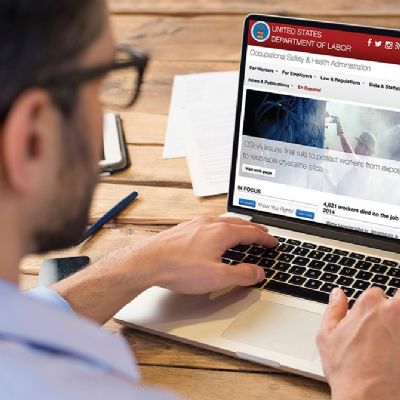A well-written, compliant and published loss-control/safety program can help protect a business from hidden costs by improving worker performance and reducing accidents.
Effective Safety Meetings Will Prevent Accidents
Safety meetings are intended to inform employees of your company’s prescribed safety procedures, and to encourage them to embrace safe work practices. Meetings consisting of employees sitting and watching a safety DVD or PowerPoint presentation are not uncommon. While the success of a safety meeting can be greatly enhanced by skillful use of visual elements to support an oral message, the meeting should never consist solely of a DVD or PowerPoint presentation.
Planning the Meeting—When planning a safety meeting, set an objective by asking: “Why am I making this presentation and what do I want to accomplish?” By reviewing accident records, you can identify and address areas within your business where safety processes need improvement. This can help you choose a pertinent safety topic that can be discussed at your next safety meeting.
Next, analyze your audience. Is the meeting intended for management, office personnel, sales representatives or service or production workers? Depending on the topic, you may need to educate only one area within the company. An example would be a presentation on back safety intended solely for shipping and receiving staff.
Lastly, select presentation aids to help supplement your presentation visually. An audience can better comprehend the material when they have a direct experience.
Use Visuals to Help Communicate Your Message—Audience retention of your presentation material increases greatly when your message incorporates appropriate visual aids. Attain even higher retention by allowing meeting attendees to participate, by performing some relevant activity in connection to the topic. Examples include a hands-on demonstration, a written quiz or feedback from employees. Materials that reinforce the safety message visually are crucial. These can include DVDs, PowerPoint presentations, live demonstrations, pictures and printed handouts.
Conducting the Safety Meeting—The most effective safety meetings are short and to the point and easily understood by the entire audience, while incorporating a variety of presentation aids. To maximize the audience’s comprehension of the material, cover only one safety topic.
If a session takes longer than 30 min., break the meeting into multiple segments. Encourage employees to ask questions and provide feedback. To begin this audience interaction, ask an employee to share a personal experience related to the topic. Keep the conversation friendly and don’t start a debate. If someone makes a critical statement during your presentation, accept it as an alternative point of view.
Near the end of the meeting, conduct a question/answer session prior to recapping the meeting.
Consider quizzing employees to ensure they’ve comprehended the material. And, als give employees information to take with them, such as a handout.
Follow-up to a Safety Meeting—The safety coordinator for your facility should continually remind employees of previous safety meetings and topics covered. A handout similar to the handout provided at your safety meeting should be distributed to employees a couple of weeks after the safety meeting. This handout most often consists of an outline of achievements and future plans as it relates to that meeting’s safety topic.
Posting charts or graphs that track progress will further reinforce your company’s goals. Hang safety signs and posters around your facility to remind employees of pertinent safety messages. And, lastly, schedule follow-up training sessions to reinforce safe working practices. MF
Article provided by Sentry Insurance, a Mutual Company, and its subsidiaries and affiliates (collectively SIAMCO) with the understanding that SIAMCO is not engaged in the practice of law nor is it rendering legal advice.
See also: Sentry Insurance Company
Technologies: Safety
Comments
Must be logged in to post a comment. Sign in or Create an Account
There are no comments posted. Safety
SafetyIs Your Plant Ready for Summer? OSHA Program Seeks to Protec...
Thursday, January 19, 2023
 Safety
SafetyWebinar Addresses New OSHA Recordkeeping Requirements and El...
Thursday, December 1, 2022






 The hidden costs of accidents occurring in manufacturing plants can be due to:
The hidden costs of accidents occurring in manufacturing plants can be due to:
